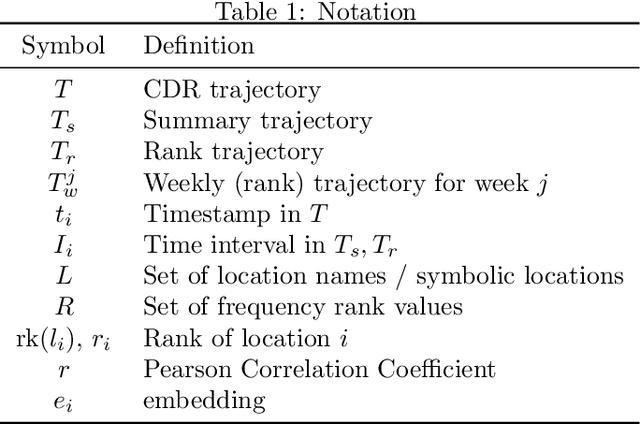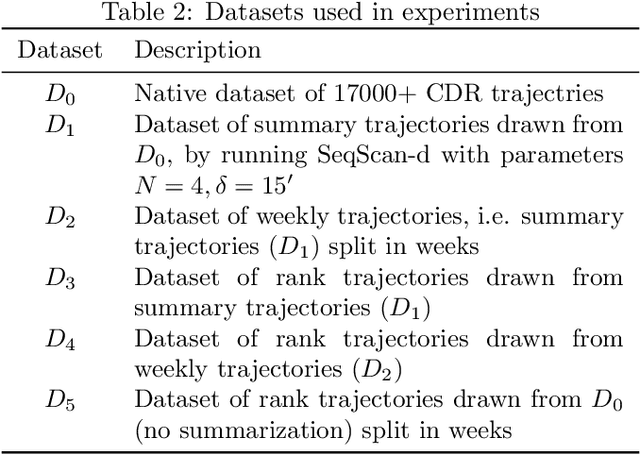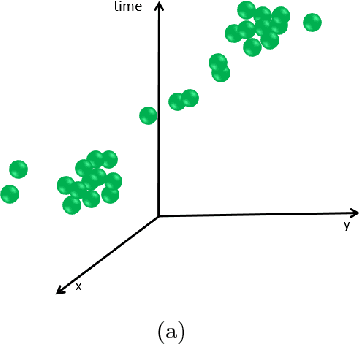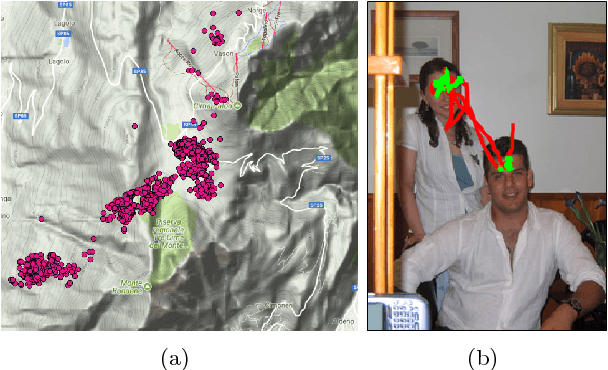Fatima Hachem
Learning Behavioral Representations of Human Mobility
Sep 11, 2020



Abstract:In this paper, we investigate the suitability of state-of-the-art representation learning methods to the analysis of behavioral similarity of moving individuals, based on CDR trajectories. The core of the contribution is a novel methodological framework, mob2vec, centered on the combined use of a recent symbolic trajectory segmentation method for the removal of noise, a novel trajectory generalization method incorporating behavioral information, and an unsupervised technique for the learning of vector representations from sequential data. Mob2vec is the result of an empirical study conducted on real CDR data through an extensive experimentation. As a result, it is shown that mob2vec generates vector representations of CDR trajectories in low dimensional spaces which preserve the similarity of the mobility behavior of individuals.
Cluster-based trajectory segmentation with local noise
May 05, 2018



Abstract:We present a framework for the partitioning of a spatial trajectory in a sequence of segments based on spatial density and temporal criteria. The result is a set of temporally separated clusters interleaved by sub-sequences of unclustered points. A major novelty is the proposal of an outlier or noise model based on the distinction between intra-cluster (local noise) and inter-cluster noise (transition): the local noise models the temporary absence from a residence while the transition the definitive departure towards a next residence. We analyze in detail the properties of the model and present a comprehensive solution for the extraction of temporally ordered clusters. The effectiveness of the solution is evaluated first qualitatively and next quantitatively by contrasting the segmentation with ground truth. The ground truth consists of a set of trajectories of labeled points simulating animal movement. Moreover, we show that the approach can streamline the discovery of additional derived patterns, by presenting a novel technique for the analysis of periodic movement. From a methodological perspective, a valuable aspect of this research is that it combines the theoretical investigation with the application and external validation of the segmentation framework. This paves the way to an effective deployment of the solution in broad and challenging fields such as e-science.
* 41 pages, Data Mining and Knowledge Discovery (2018)
 Add to Chrome
Add to Chrome Add to Firefox
Add to Firefox Add to Edge
Add to Edge